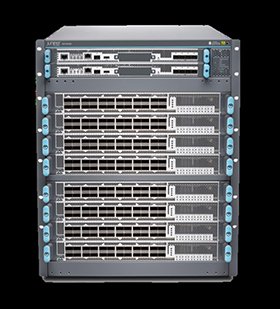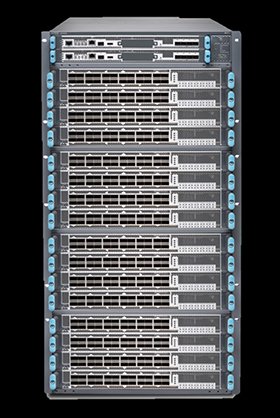
chris - Fotolia
Juniper unveils Penta chipset for 5G infrastructure
Juniper unveils the Penta chipset for carrier's 5G infrastructure. The packet-forwarding chip features higher speeds and low power consumption.
Juniper Networks has introduced for its MX Series edge routers two chassis and a chipset designed for carriers rearchitecting their networks to deliver 5G services to enterprises.
The MX Series 5G Universal Routing Platform, unveiled this week, includes the MX10008 and the MX10016 Universal Chassis and the Penta Silicon. Juniper is aiming the 5G infrastructure products at carriers adopting software-based networking as the infrastructure underpinning next-generation services.
Carriers' network redesigns include making their infrastructure more programmable to configure and deliver services faster. To support that effort, Juniper introduced Penta, a 16 nm packet-forwarding chipset that consumes 0.5 watt per gigabit, which is half the amount consumed by Juniper's current Junos Trio silicon.
Penta's high speeds triple the bandwidth of Juniper's MX960, MX480 and MX240 routers. For security, Penta supports MACsec and IPsec encryption to protect data traveling through a carrier network.
"As networks move to 5G, encryption is going to be a critical component that will have to be done at scale," said Donyel Jones-Williams, Juniper's director of product marketing management.

Benefits of new MX chassis in 5G infrastructure
The MX10008 and MX10016 chassis are a variant of the PTX and QFX Universal Chassis introduced last year. Collectively, the products span the "entire routing spectrum," Jones-Williams said.
"Any kind of routing that you need can be done with a single chassis type," he said.
Juniper designed the 13-RU MX10008 and the 21-RU MX10016 for edge routers. The chassis can deliver maximum speeds of 19.2 Tbps and 38.4 Tbps, respectively. Juniper offers a variety of line cards and software to address networking use cases as carriers build 5G support into their data centers and WANs.

5G is the latest iteration of cellular technology engineered to boost the speed of wireless networks to as high as 20 Gbps, exceeding wireline networks today. The technology could also offer latency of 1 millisecond or less for uses that require immediate feedback.
In general, carriers are testing 5G infrastructure technology and plan to move it into production gradually starting next year. Analysts, however, do not expect businesses to start buying 5G services until 2020 at the earliest. Industry observers expect the internet of things to be an early driver of the 5G commercial market.
Juniper, which competes with Cisco and Nokia in carrier routing, plans to make the latest chassis available before year-end. The company plans to release Penta-powered line cards for the MX960, MX480 and MX240 in the first quarter of next year.





